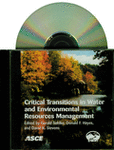Climate Regionalizing for the Assessment of ENSO, NAO and SST Effect on Regional Meteorological Drought: Application of Fuzzy Clustering
Abstract
Get full access to this chapter
View all available purchase options and get full access to this chapter.
